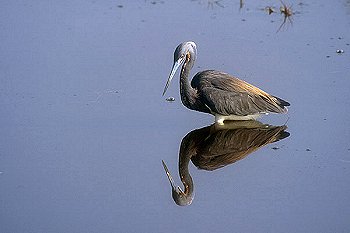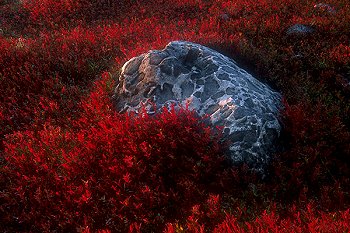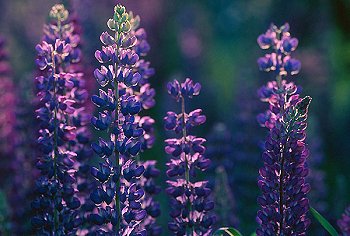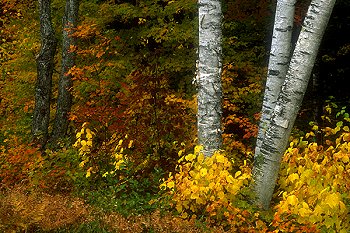Characteristics Of Light
by Mitch Moraski
 I
live in Vermont where summers seem to come and go in a flash and we all
look forward to the vibrant colors of autumn. The Green Mountains turn
golden, and most important to an aspiring nature photographer, the light
hugs the horizon ever so closer and gives us the magical light that allows
us to capture those dynamic images. There are many important
characteristics that go into creating great nature photos, but to me
nothing wets my appetite more than great light. Sure I look for great
images, but I also seek out great light. After all, the word photography
means "painting with light" so lets talk a little about the
characteristics of light. I
live in Vermont where summers seem to come and go in a flash and we all
look forward to the vibrant colors of autumn. The Green Mountains turn
golden, and most important to an aspiring nature photographer, the light
hugs the horizon ever so closer and gives us the magical light that allows
us to capture those dynamic images. There are many important
characteristics that go into creating great nature photos, but to me
nothing wets my appetite more than great light. Sure I look for great
images, but I also seek out great light. After all, the word photography
means "painting with light" so lets talk a little about the
characteristics of light.
Light makes photography possible; and it can be magical, just plain
dull or anything in between. It's up to us to choose what kind of light to
use. When I'm searching for great images I go to places where I know the
light will perform for me. My canvas is laid before me. It's then that I
must learn to paint with that light.
The Characteristics of Light
Consider these characteristics of light: direction, character and color.
How these three combine will determine the character of your images.
Direction: How your subject is illuminated is determined by
the light's direction. In photography we talk about front lighting, side
lighting, and back lighting.
 Front
Lighting is when the light is behind you and falling directly on
your subject. Front
Lighting is when the light is behind you and falling directly on
your subject.
I remember as a kid my mom always saying that the sun must be over
her shoulder falling on my siblings and myself. This type of light
produces flat one-dimensional images and causes your subjects to squint
into the sun.
It is by far the worst type of light for any landscape or portrait
photographer. But front lighting can be very useful for tight images of
birds or any mammal. In this case the light equally illuminates the
entire area of interest to the photographer.
Exposure is easy with front lighting as the entire subject is
illuminated equally.
 Side
Lighting. Personally this is my favorite type of light to work with.
Side lighting creates shadows that emphasize on the shape and texture of
your subject. Side lighting creates a three dimensional effect in your
images. Landscape photographers are more prone to use side lighting at
sunrise and sunset. Exposure can be more challenging as shadows can
block up and become featureless, or highlights can be burned out with
overexposure. Side
Lighting. Personally this is my favorite type of light to work with.
Side lighting creates shadows that emphasize on the shape and texture of
your subject. Side lighting creates a three dimensional effect in your
images. Landscape photographers are more prone to use side lighting at
sunrise and sunset. Exposure can be more challenging as shadows can
block up and become featureless, or highlights can be burned out with
overexposure.
For tips on metering for proper exposure when using side light check
out Gary's article Exposure:
Get It Right The First Time in Issue
#14.
 Back
lighting Back
lighting
is when you are facing your light source. Now you become the illuminated
subject. Backlight outlines shapes by creating halos or silhouettes.
By changing exposure you can determine how light or dark you want to
make your subject. Picture a person with the sun setting behind them.
Expose to capture the details of the person and the sky will wash out.
Expose for the sky and most of the detail of the person will be lost,
but the sky will be the correct exposure. Stop down even further and the
sky will be rich and saturated and the person will become a silhouette
against that colorful sky.
Or you can use fill flash to illuminate your subject and use the
natural light to define the edges of the subject. Now that person will
be sharply defined against that same rich colorful sky. For more
information on fill flash check out Chuck's article Flash
Photography Made Simple .
Character: The character of light is directly related to the
source. Light can be harsh at midday on cloudless days or diffuse on
overcast days. You will not find many, if any, experienced nature
photographers shooting in harsh light.
Harsh light creates images high in contrast with dark shadows and blown
out highlights. When the leaves turn here in Vermont I pray for great
early morning and late day directional light. At midday I enjoy diffused
light, or what I call "nature's canopy", and perhaps a brief
shower to help saturate colors.
 Diffused
Light is great for close-ups. Film's ability to record color and detail is
at it's highest under these conditions and the same holds true for you
digital shooters. Diffused
Light is great for close-ups. Film's ability to record color and detail is
at it's highest under these conditions and the same holds true for you
digital shooters.
Just keep in mind that your eye can see a greater range of light, from
deep shadows to bright highlights, than either film or digital can
capture. Learning to "see" what you can capture and to gauge the
light will make a big difference in your shooting.
|
